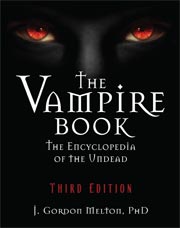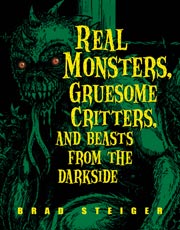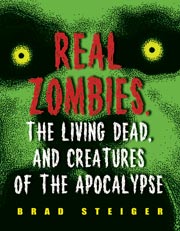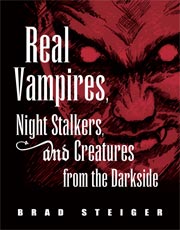Taw: Jungle Werewolves
For many years, Harold M. Young, an official of the Burmese government during the period of British control, was stationed among the remote tribes of the Shan of the Lahu. It was among these peoples that Young first heard of--then saw for himself--the strange mountain werewolves that terrorize the Lahu tribe, whose people live in the jungles bordering Northern Thailand and Burma (now Myanmar).
Manifestations of the supernatural, Young discovered, were daily occurrences among the Lahu. The government official expressed his opinion that the more humanity retreated from nature and hid behind the barrier of civilization, the farther we remove ourselves from the basic powers which are the natural heritage of the "uncivilized" human.
Working among the native people, Young had heard about the Taw for many years. They were always described to him as strange, fearsome creatures with furry hides that at certain times of the month would raid a village and either kill or carry off a victim. He had dismissed all such comments referring to the strange creatures as native superstition, an excuse for carelessness in allowing a wild beast to get past the sentries and into the village. Young was secure in his "educated and civilized" opinion until he was actually confronted by the bloody deeds of a jungle werewolf.
The eerie confrontation occurred in 1960 while he was on a hunting party. His expedition had taken him into Lahu country, high in the mountains that lie to the north of the Burma-Thailand border. The trek had been wearisome, but the thought of some nighttime hunting had adrenalin pumping through his system. As he neared a Lahu village he foresaw no difficulty in obtaining rights for a night shooting; the Lahu and he had always been on friendly terms.
On this night, however, the chief shook his head firmly in denial of his request. He warned Young that the Taw were near to the village. It was dangerous to hunt now.
Young was just opening his mouth in protest when a terrible shriek filled the night. His hunter's responses were well-conditioned. His hand grasped his pistol firmly as he ran to the thatched hut standing close to the jungle's edge from which the cry had issued. His mind and body alert, he could not help noticing that the chief and other of the men followed him at a distinctly slower pace. He was puzzled by their reluctance to dash after him. He had seen these same men face a snarling tiger without fear--yet now they seemed strangely hesitant about rendering aid. Over and over he heard the whispered word, "Taw."
As Young approached the hut, he cautiously slowed his pace. An experienced hunter and adventurer, he could smell danger in the atmosphere of the now ominously silent hut. He tip-toed up to the window and squinted through the aperture.
Later, recalling the incredible experience for writer Ormand McGill, Young said, "There was bright moon that night, and as my eyes became adjusted to the light in the hut, I saw a sight that I will never forget to my dying day--one that literally lifted the hairs on my head."
Inside the hut was a ghastly creature, chewing slowly on the slashed neck of a dying woman. The hideous beast could only be described as half-human, half-beast. Its body was covered with coarse hair. Its face was grotesque; its eyes small and red. Its mouth showed cruel fangs, dropping blood and spittle as it worked deeper into the woman's flesh.
Young had seen enough. His hand automatically brought up the pistol to the window and blasted several slugs at the monster. The beast spun crazily, leaped to its feet with a wild cry, and dashed past the men gathered outside the hut. Within moments it had disappeared into the night.
Young shook his head in confusion. He was an expert marksman, but apparently he had missed the creature at point-blank range, for the thing had vanished into the jungle. Resolved to bring the beast down, he shouted for the men to follow him and they plunged into the darkness after it.
Hours later, their search unsuccessful, they gathered back at the village and huddled around a fire. Talk was scarce; the embers were low. Their nocturnal encounter with the half-human, half-animal being caused more than one tribesman to brood in silence as he awaited the dawn.
With the first light of morning, Young and the Lahu renewed their search. In the clear light, a fresh clue was discovered. Splotches of blood were found leading into a thicket. Young hadn't missed the monster after all. The hunters excitedly followed the trail, which circled the village and re-entered it from the opposite end. Young was baffled. How could the creature have crawled back into the village unnoticed?
The blood trail was traced to a certain hut. With a sudden rush the men tore aside the skin door covering. Inside, lying on a bed was a dead man. The trail of blood had turned into a stagnant pool that had formed from the blood dripping from a bullet hole in the man's side.
Young could barely speak. This was not the thing that he had seen ripping at the poor woman's throat the night before. This was a man.
The chief leaned forward and spat on the man's face. "Taw!" he uttered with revulsion.
That amazing incident was the only time that Harold Young actually saw the hated and feared Taw, but he continued to hear many stories about them during his stay in Burma.
From The Werewolf Book: The Encyclopedia of Shape-Shifting Beings, Second Edition by Brad Steiger, (c) 2012 Visible Ink Press(R)
Steiger's homage to the beast within provides meaty facts for the lycanthropic in all of us.










